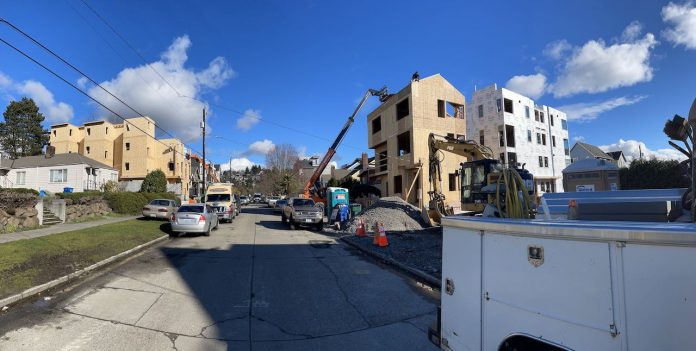There’s a spot just inside Seattle’s Gilman Park where the scent of turned earth and new asphalt mingles with that of cooking grains coming out of West Woodland’s Brewery Row. At this rare moment, the scent of construction is stronger. Surprisingly for the neighborhood, there are currently fewer breweries than construction sites within three blocks of the park. And more construction is coming near Market Street to the previously quiet neighborhood on the eastern edge of Ballard.
On the northern boundary of Gilman Park — NW 54th Street — there are three sites of ongoing townhouse construction to the northeast and three sites of open grading to the northwest. A block north of the park there are two land use placards announcing impending construction and five townhouse sites in varying stages of excavation, grading, construction, and exterior installation. And at 3:00pm on Thursday, Stoup is cleaning out its primary fermenting tuns.
In total, the neighborhood will be adding almost 900 new housing units and 5,000 square feet of commercial space. These will replace approximately 40 single-family detached houses and a handful of commercial buildings. It also reflects much larger changes coming to the neighborhood. The feeling of churn is palpable, but the sense of potential in West Woodland is greater.
The apartment blocks
The largest developments are concentrated on parcels facing Market Street. Starting in the west, the 1100 block of NW Market Street will be seeing three developments in the near future, with another in preliminary planning. Permits have been issued for 1445 NW Market Street, a seven-story 122-unit building that will replace the Firestone shop. On the east side of that block, construction is underway for 1100 NW 54th Street, a seven-story building 85 efficiency units and ground floor coffee shop. The vacant house between this building and Market Street was also demolished at the same time, but no proposals to replace it have been submitted yet.
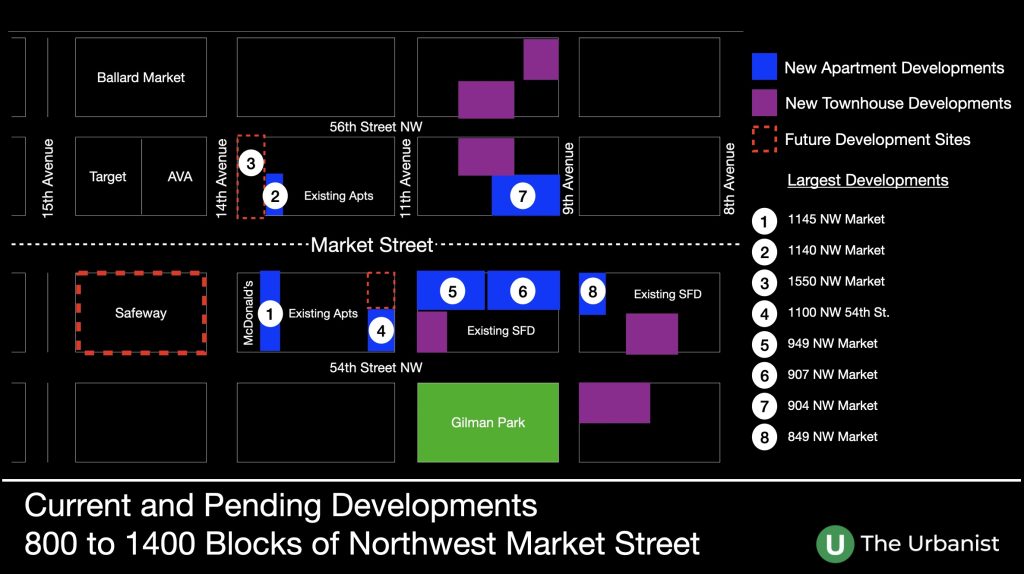
North of Market Street on the 1100 block, there is a preliminary design guidance application to replace the KFC with a building of 86 efficiency units. That application mentions an imminent application for a new building to replace the Sherwin Williams/Beehive building at 1550 NW 14th Avenue and occupy the entire west end of the block.
The most visible immediate change will be coming to the 900 block of Market Street. South of the road, construction is underway for a 93-unit Aegis senior care facility with a third of the rooms dedicated to memory care. The remainder of that block facing Market Street will be taken by 907 Market, a five-story 228 unit building that is in permit review. On the north side of the street, the eastern half of the block will be 904 Market, also proposed to be a five-story structure with 150 units of one- and two-bedroom apartments and 3,000 square feet of ground floor retail.
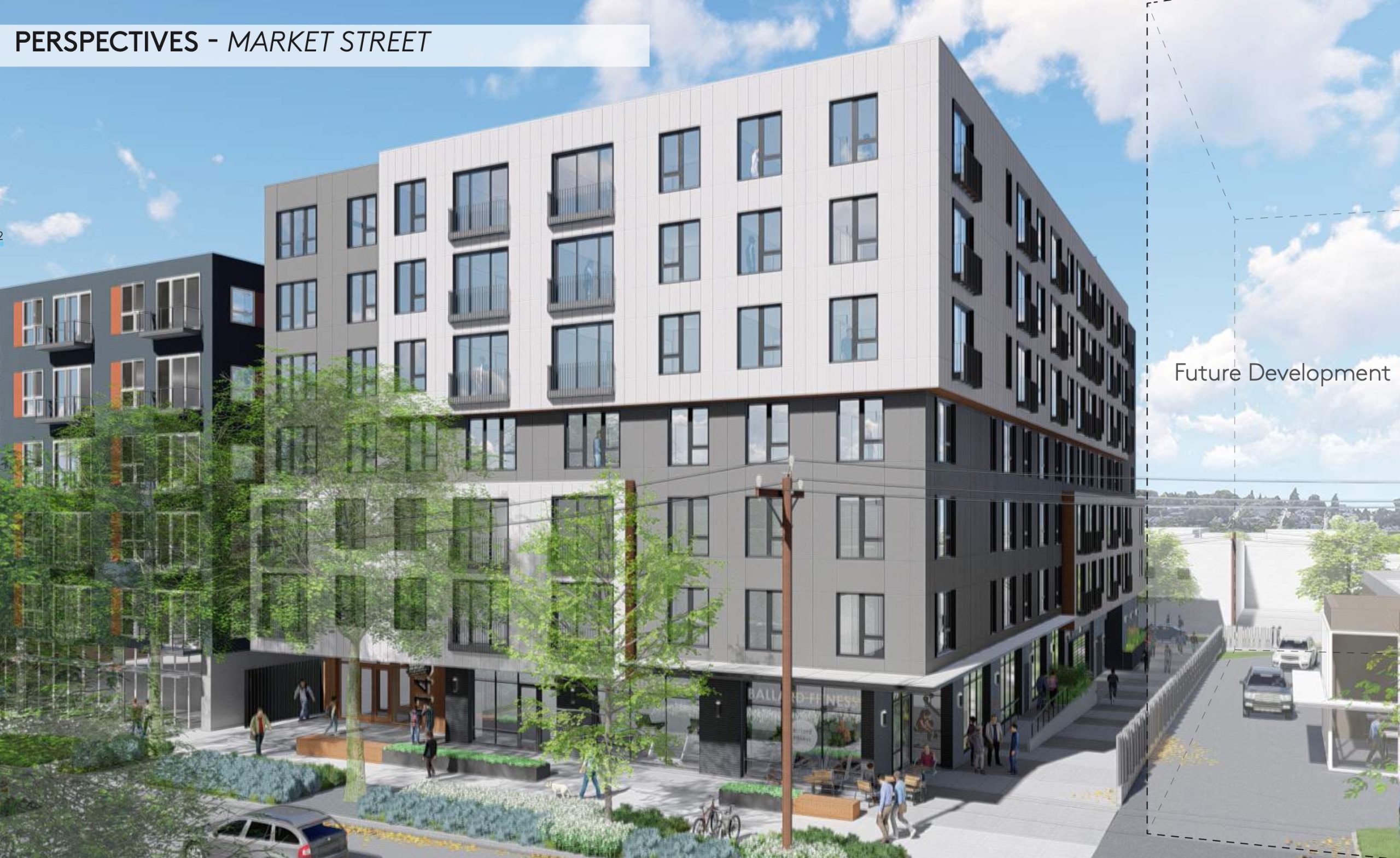
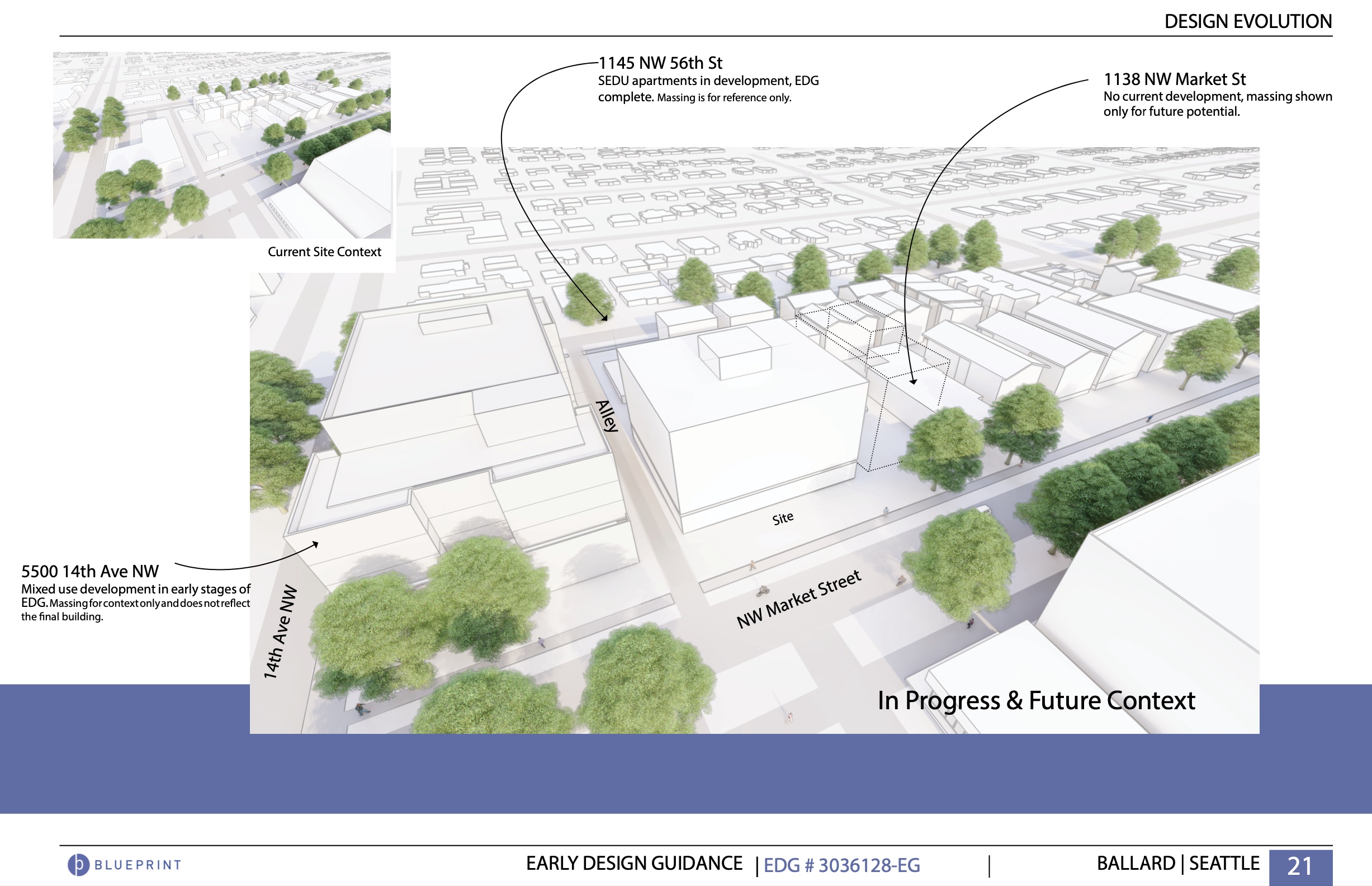
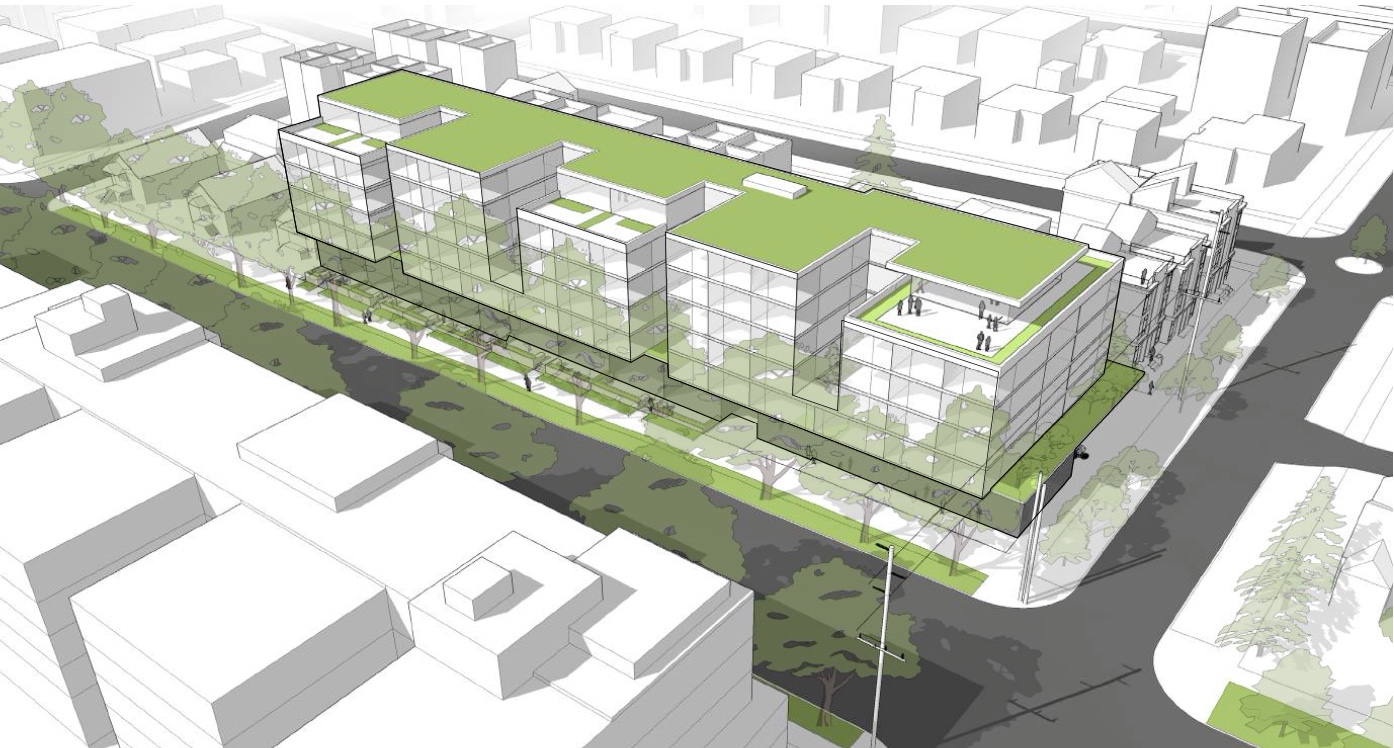
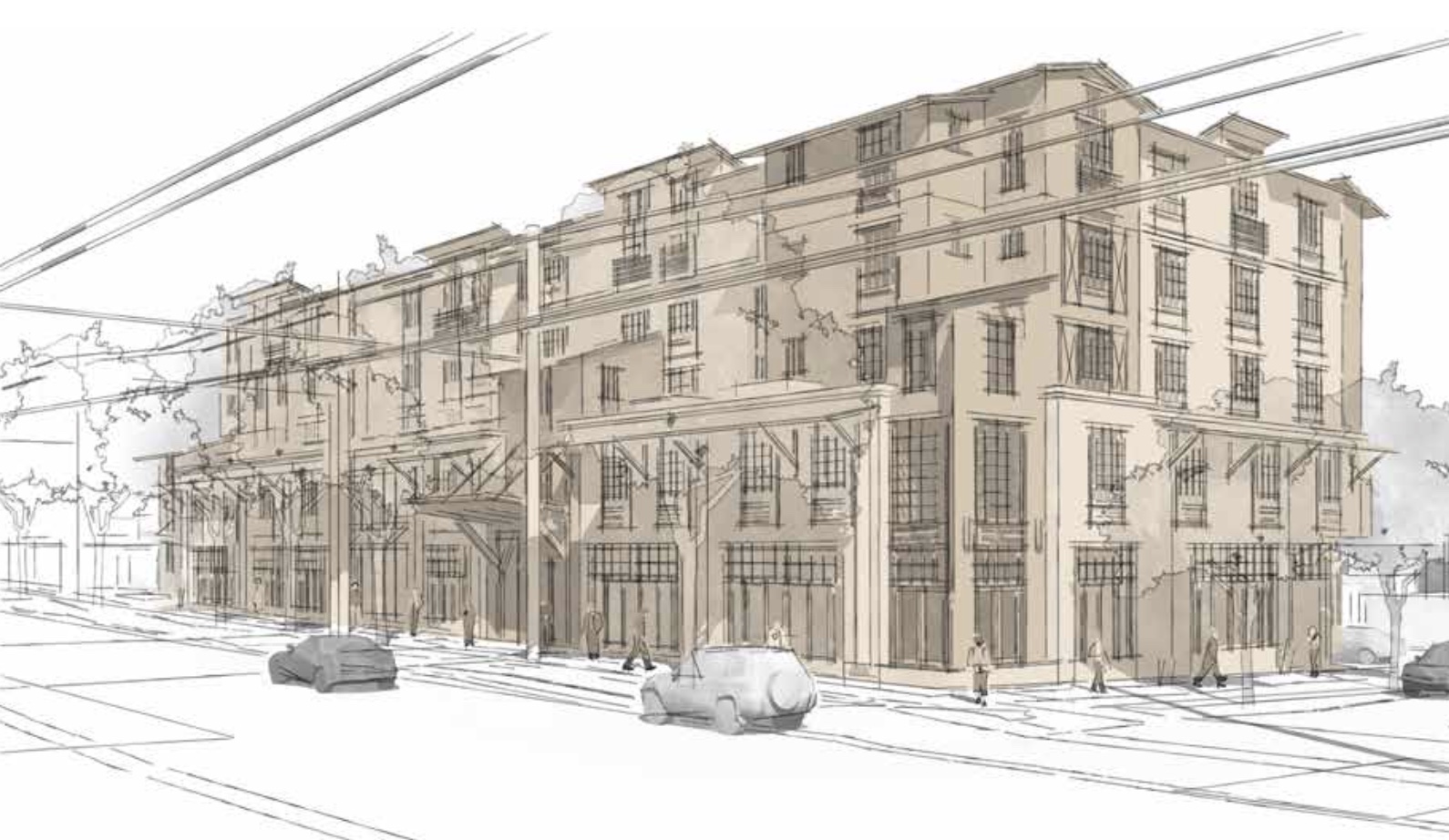
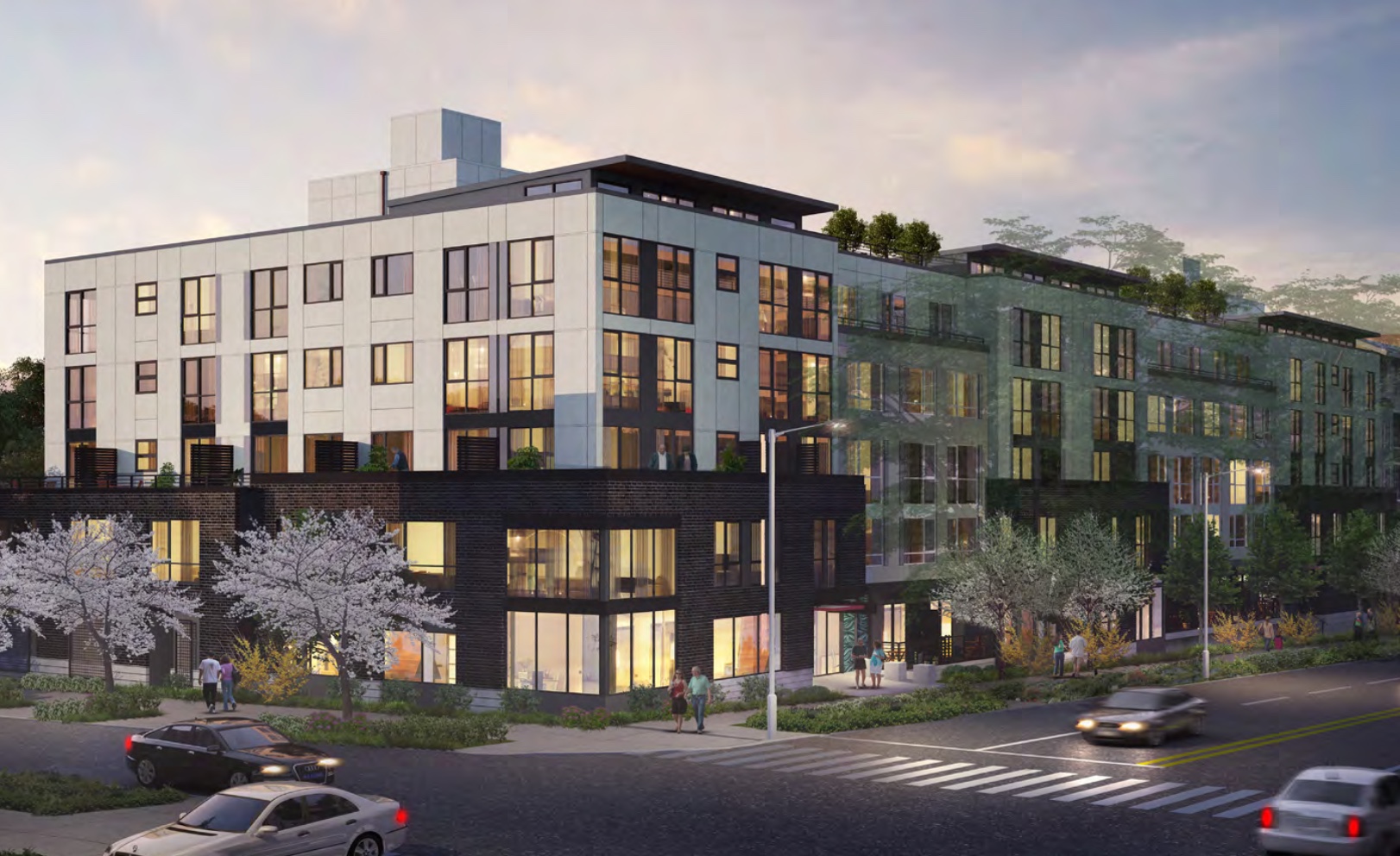
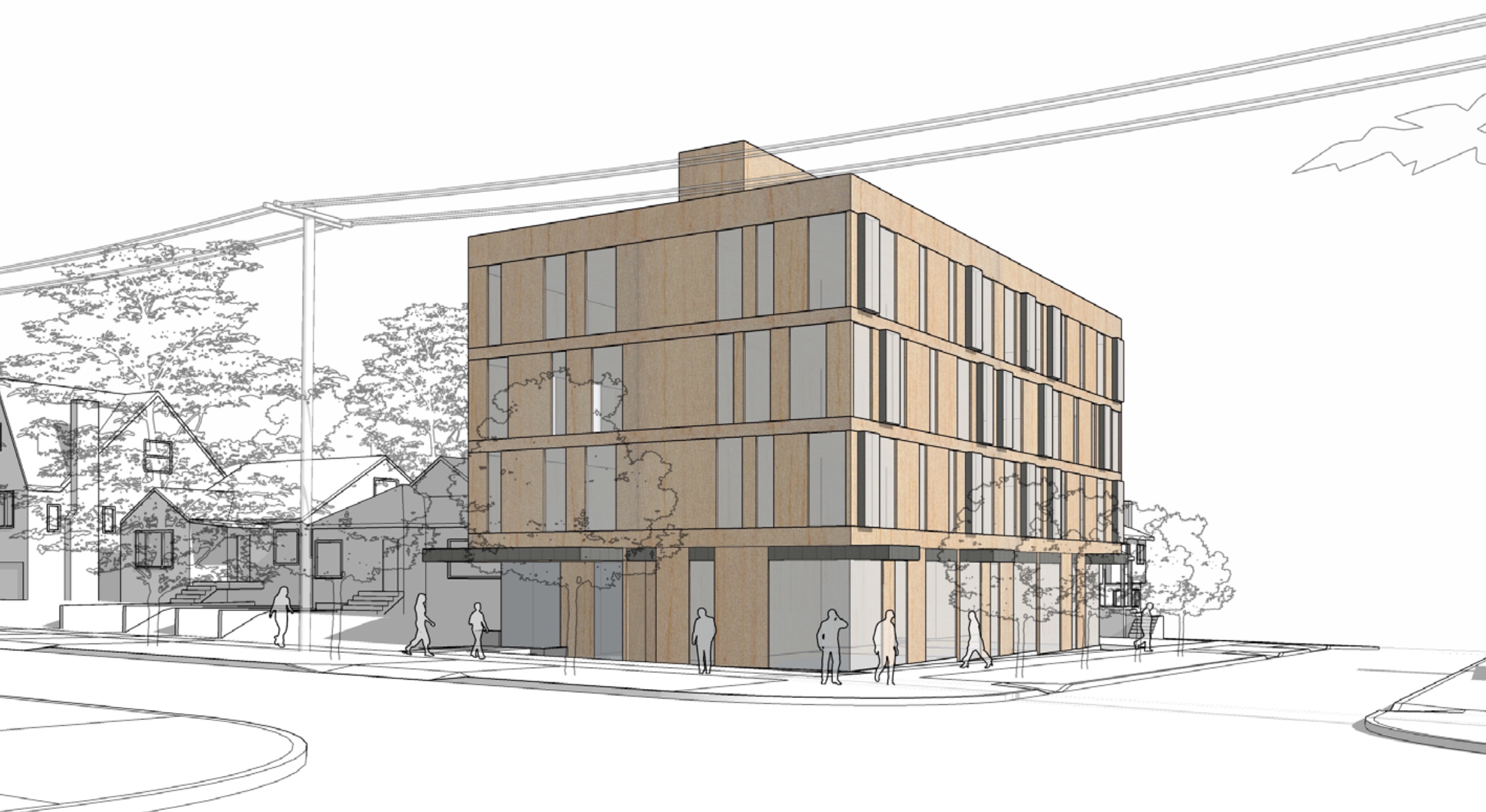
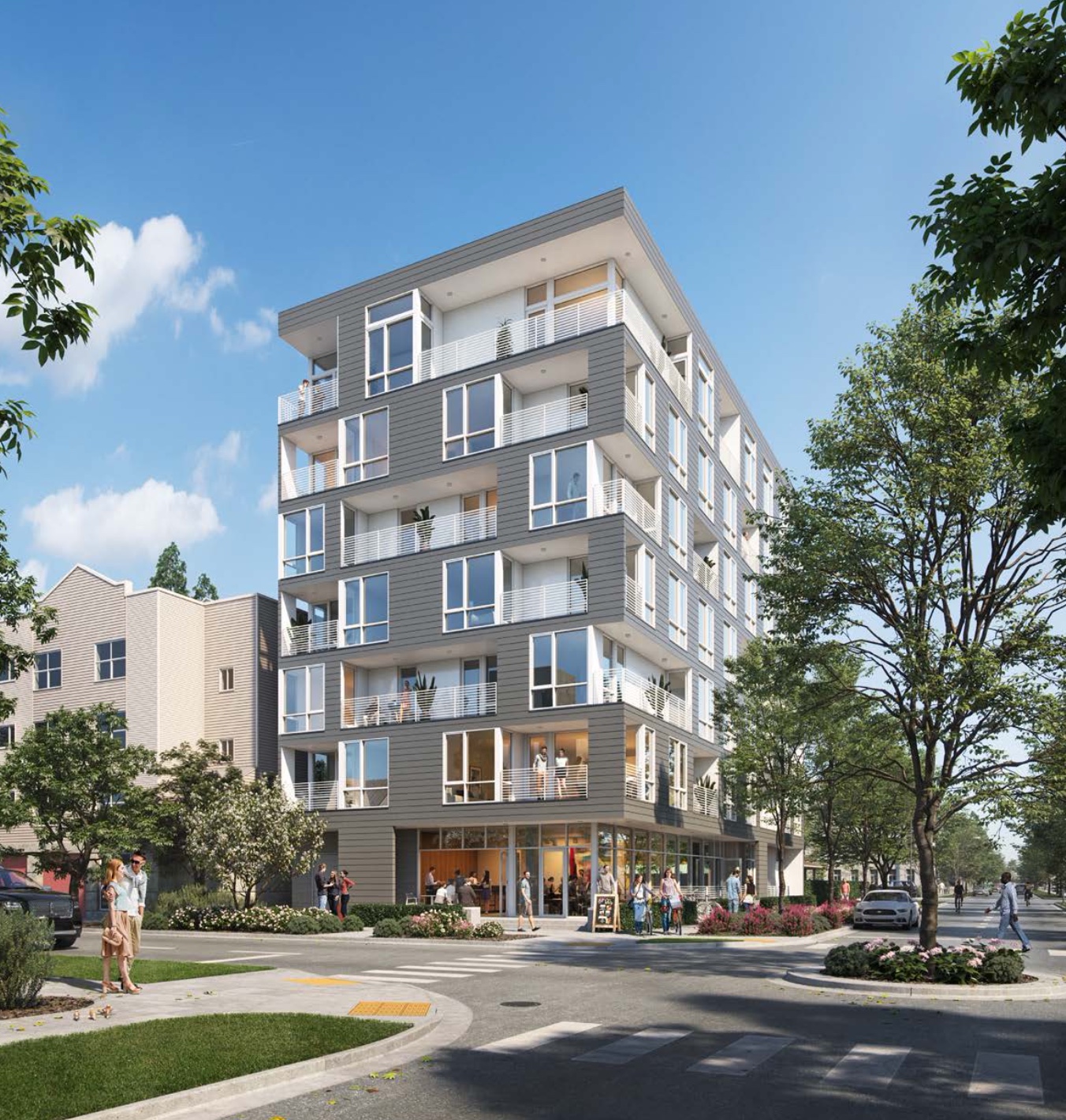
The 800 Block of Market Street is also seeing some development, with a four-story building of 34 efficiency units at 849 Market having completed administrative Design Review in the fall.
In total, the seven developments with applications propose 500,000 square feet of new housing and 798 new residences. They will have 5,900 square feet of commercial space, mostly on the ground floor of 1145 Market and 904 Market. But the potential coffee shop at 1100 NW 54th Street will be an excellent addition facing the northwest corner of Gilman Park.
Notably, there will be 203 automobile parking spaces constructed and 402 bicycle parking spaces constructed. This welcome and appropriate change of priorities was spurred by a 2016 rezoning that extended the Ballard Neighborhood HUB to 11th Avenue NW and waived certain parking requirements due to frequent transit.
The curtailment
Even with development on two of these sites currently underway, it doesn’t fully account for the feeling of profound change coming to this section of the neighborhood. To explain that, we have to step a block off Market Street on either side. In the blocks north and south, there are almost 100 townhomes that are under construction or recently completed. In some places, such as the 800 block of NW 54th Street and the 900 block of NW 56th Street, the construction sites are facing one another on either side of the road.
Many of these developments are three to six units replacing one or two single-family homes. Some of the larger clusters include 21 townhouses underway at 940 NW 54th Street, 14 units being reviewed at 901 NW 57th Street, and 14 units among three projects on the southeast corner of 9th Avenue NW and NW 54th Street.
These townhomes do represent a fair increase in density. However, many do not appear set up to allow the energy savings and walkability that should come with it. The new houses outside of the larger clusters are not being developed as sticks of homes. Most are a duplex in the rear and a single detached domino standing sentry in the front. That consumes the interiors with a whole lot of inaccessible stairs, and leaves all the sides of the building exposed to the elements and leaking heat.
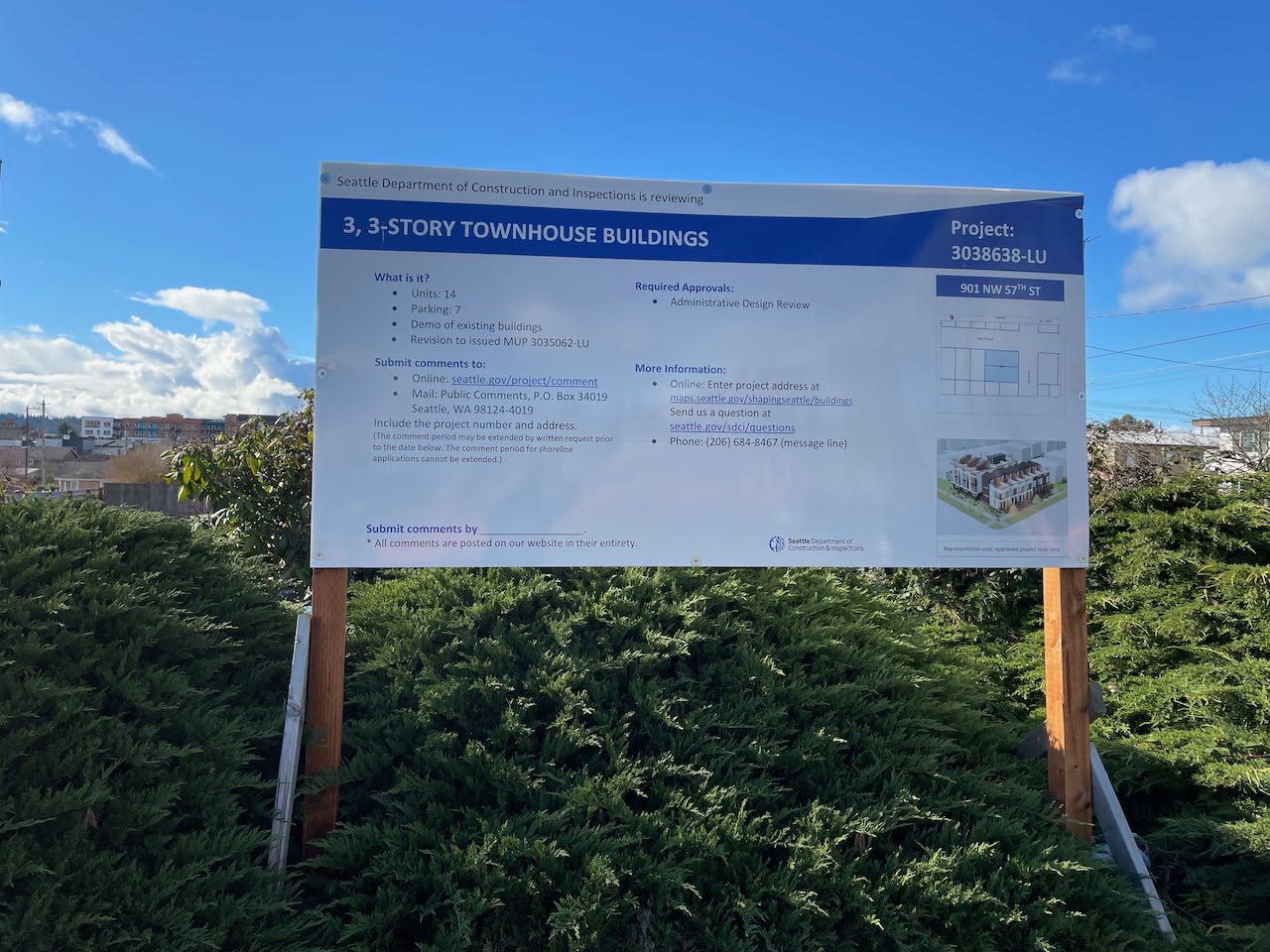
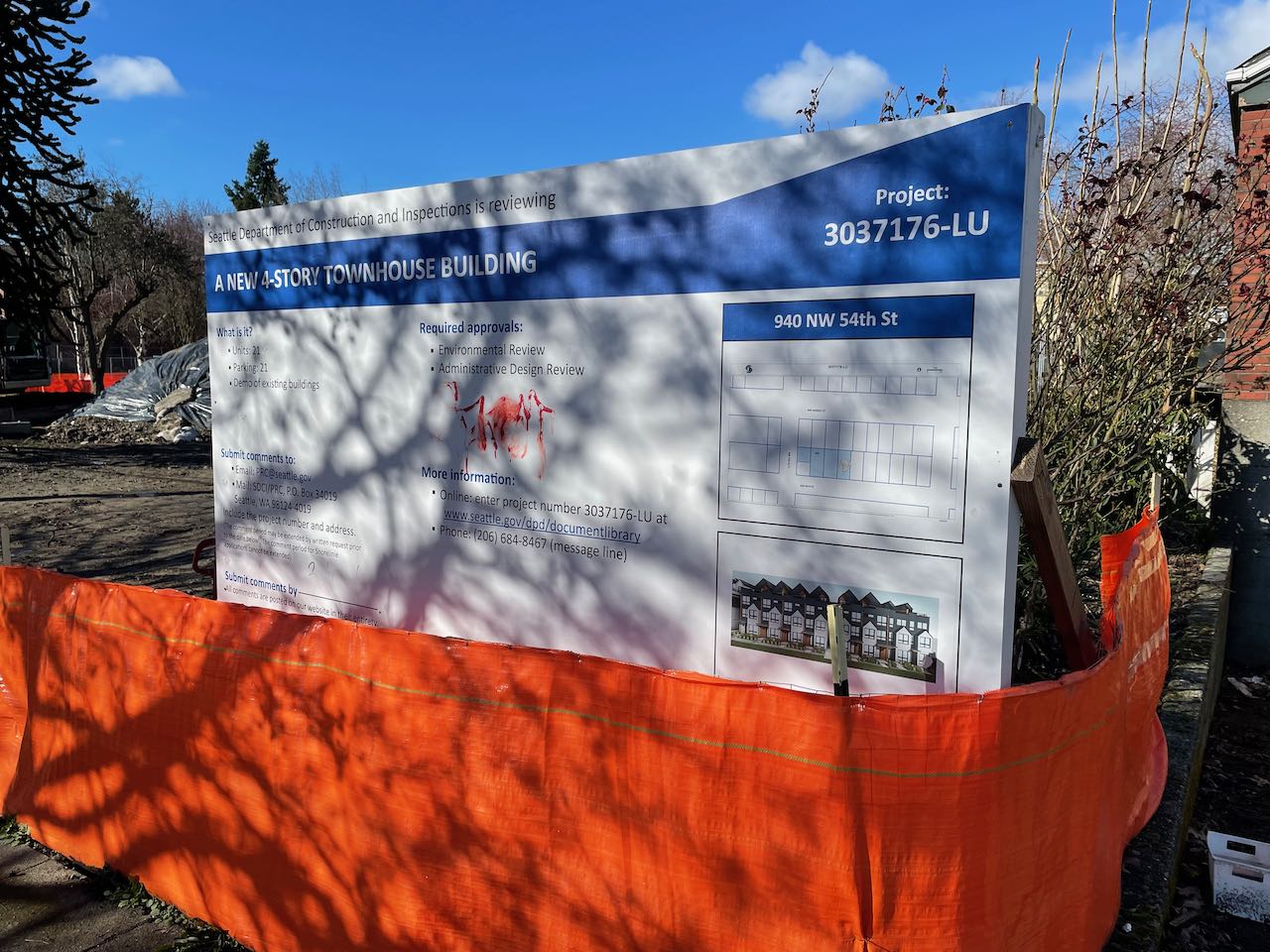
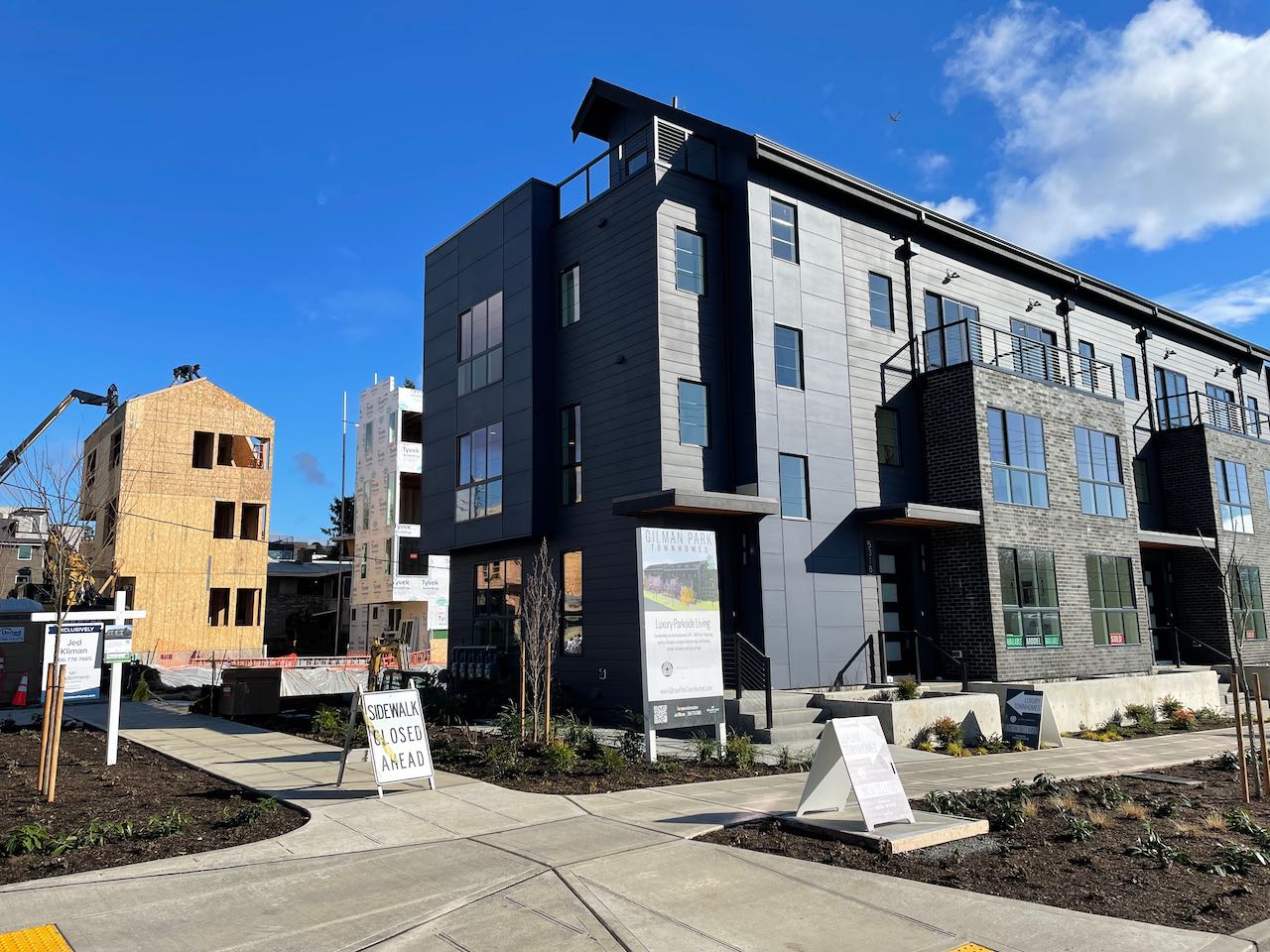
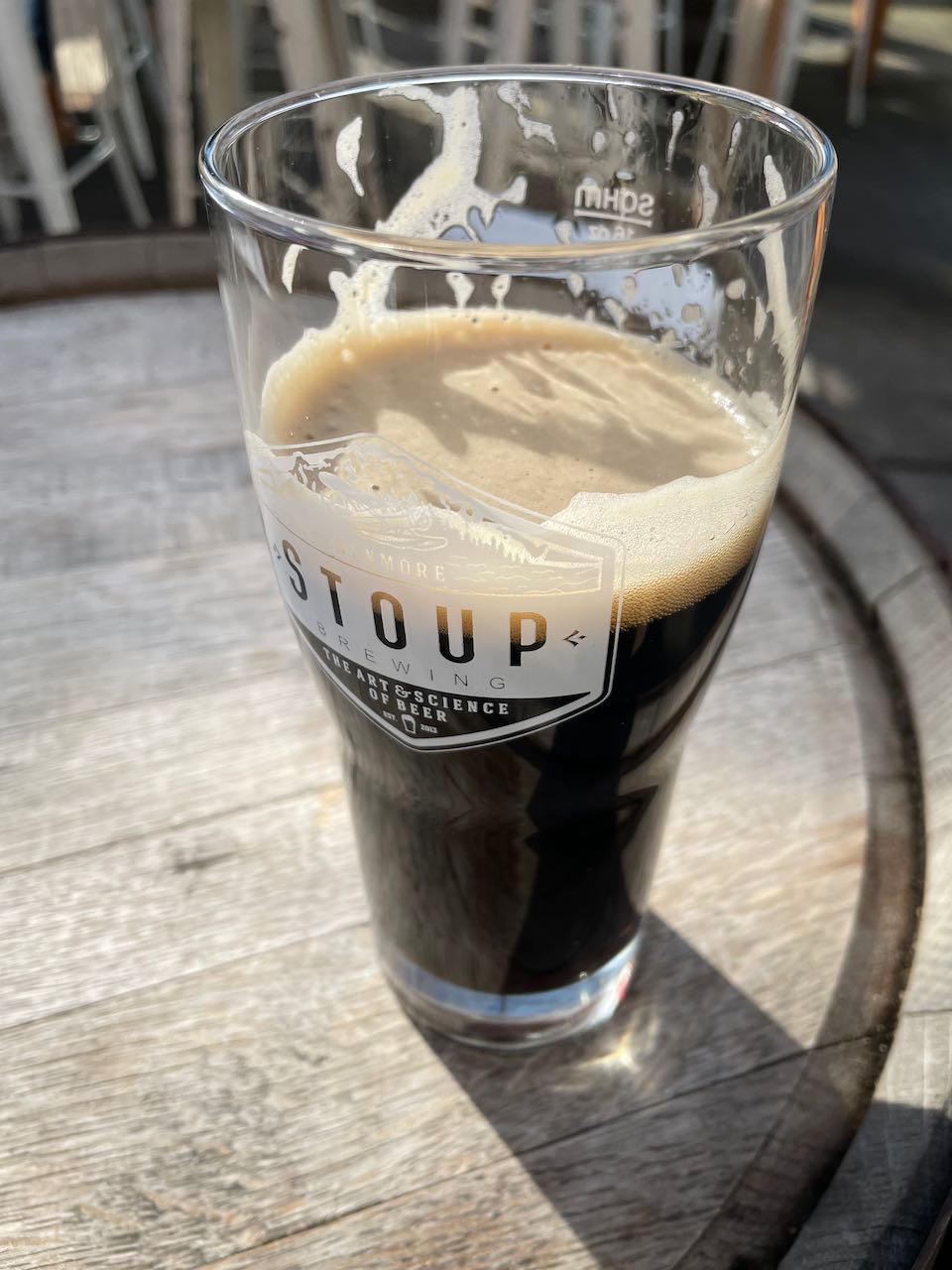
During my walk through these streets the whole area felt like it was a single large construction site. Work trucks for trades occupied the curb spaces posted with temporary “No Parking” signs. The staccato of pneumatic nail guns mixed with beeping of backing up cherry pickers. Orange drift fences and broken sidewalks abound. It is understandable if longtime neighbors feel that the pace of change is irritating if not frightening.
And change isn’t done.
The future
The largest potential development site is just west of these changing streets. The south side of Market Street’s 1400 block is currently occupied by a Safeway. As followers of Natalie Argerious’ articles and The Urbanist Podcast know, Seattle’s Safeways have been developing upward. This one can go up and down, as it is the preferred location for Ballard’s Sound Transit station.
There has been a lot of pushback on putting the station there. The argument is that Ballard’s station should be as close to the historic core of Ballard as possible. So an underground station at 17th Avenue NW or 20th Avenue NW would be preferable. A location on 15th Avenue NW or 14th Avenue NW is separated by the impenetrable barrier of, well, 15th Avenue itself. There are some concepts to overcome this issue, including a particularly brilliant one to move the Ballard Bridge, but the psychic barriers persist.
The developments east of 15th Avenue suggest that the core of the neighborhood is shifting, and that the traditional boundaries of the Ballard Urban Village are antiquated. The question is whether maintaining 15th Avenue as an artificial barrier and clogged urban highway is healthy for residents or businesses in northwest Seattle.
But the developments also show the procedural hurdles that persist in promoting smart, dense, climate friendly development. It’s no coincidence that the large structures face Market and townhomes fill the blocks facing the smaller streets. That’s how it was zoned. Seattle continually establishes zoning that’s one lot deep and changes mid-block. Such narrow zoning causes issues for businesses and housing around the city. The city also pushes density up against the city’s largest and most polluted arterial streets.
The dozens of townhomes immediately adjacent to the new apartment buildings beg us to consider why the city didn’t zone the entire block for larger buildings. The fact that these townhouse sites run one next to another show that it would have been very possible to have consolidated these lots into larger, more efficient, buildings. Having failed to do so, consolidation actually gets more difficult in the future. Instead of negotiating with six owners of aging detached homes, there are now 24 owners of brand new houses on 24 separate lots. Lack of foresight in zoning allowed the underlying land to be shred apart.
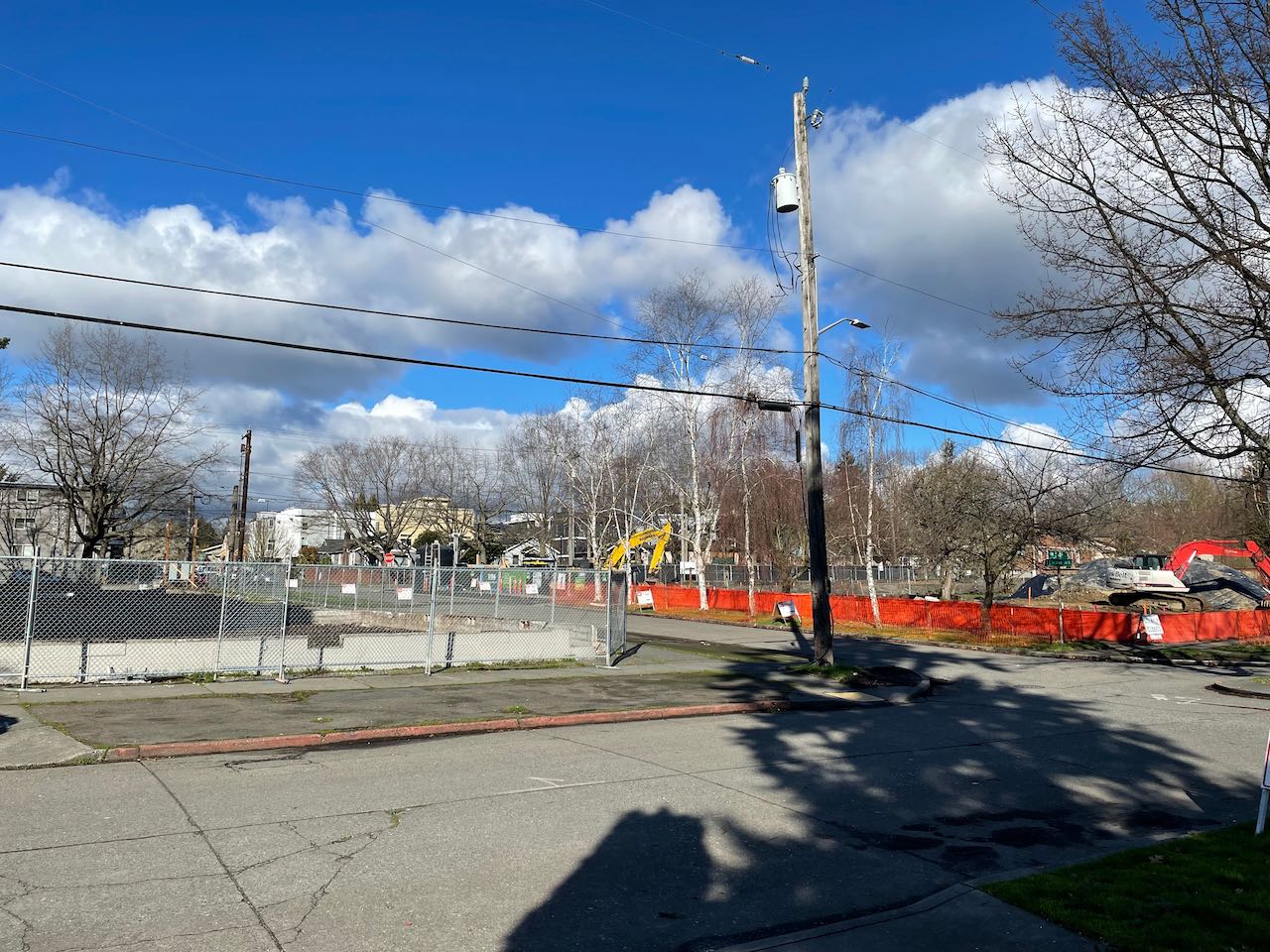
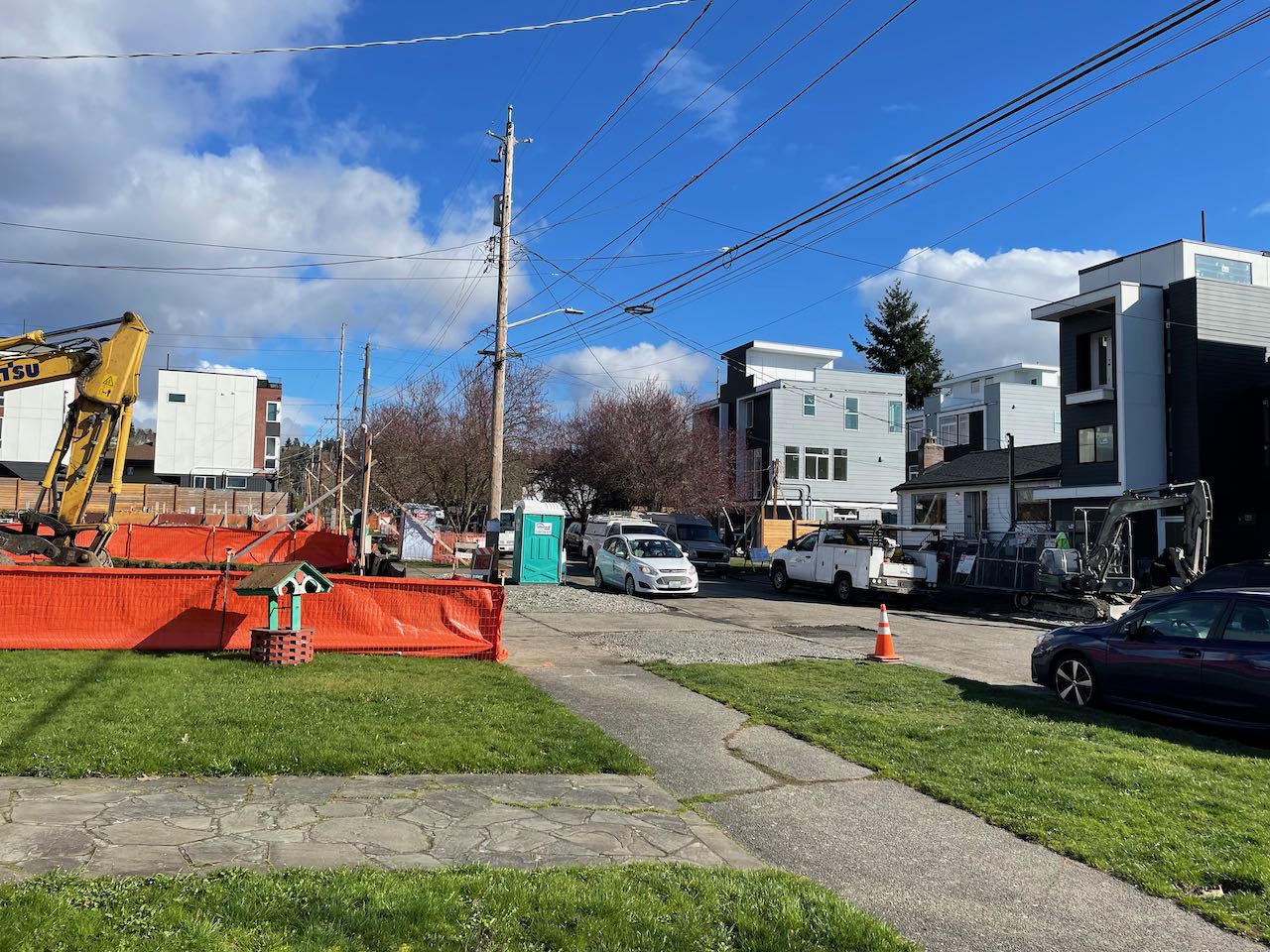
And there are proposals to do it again. The Draft EIS for Seattle’s Industrial and Maritime Strategy includes one alternative to rezone some of the Ballard industrial space with a thin line of Urban Industrial at the north and keeping the remaining as a mix of Maritime, Manufacturing, and Logistics. That is the least preferred outcome, and Ballard’s Brewery Row should be unified under a single zoning that allows the most flexibility for legacy employers and next generation manufacturers.
Admittedly, speaking about a single zoning or removing the barrier of 15th Avenue sounds like a move to annex more and more West Woodland into Ballard. It sounds like a threat to change the quieter neighborhood because there’s not enough space left in the busy bar district. The blocks of Market Street just east of 15th Avenue are simply the first sacrifice in this ongoing battle for supremacy. Car dependent with fast food and gas stations, they were easy targets to be gobbled up. Now redevelopment is coming for the single family homes, and there’s going to be a push to fortify against further development.
But honestly, the pressure is not coming from Ballard or future light rail or even greedy developers. It’s coming from the fact that there’s simply not enough places to build new houses in the city. The pace of change on such a small segment of Market Street does feel catastrophic. But that’s because so much pent up demand has been focused on such a small area. The city’s broken and regressive zoning ordinance is a magnifying glass, focusing energy and setting fire to the tiny spots where new development is permitted.
The best alternative could be to stop expanding the Ballard HUB and all the other labels across 15th Avenue. Instead, reconsider this network of new developments and Brewery Row and industrial spaces and Gilman Park as the newly forming heart of its own West Woodland neighborhood. Consider what commercial spaces on a growing 8th Avenue should look like and how they are draws and not just an outpost.
And that’s the lesson here. These new developments will continue to be East Ballard so long as they are dependent on Ballard for their density and services. So long as this segment of Market Street remains a thoroughfare to just get up the hill between Ballard and Phinney Ridge, this area will remain weird townhouses bumping up against the larger apartments. But a new core is forming with Gilman Park as its center. The next few years will offer the opportunity to consider this area on its own, with strong transit and employment. Hopefully, these developments are just the beginning of a lot of quality housing too.
Ray Dubicki is a stay-at-home dad and parent-on-call for taking care of general school and neighborhood tasks around Ballard. This lets him see how urbanism works (or doesn’t) during the hours most people are locked in their office. He is an attorney and urbanist by training, with soup-to-nuts planning experience from code enforcement to university development to writing zoning ordinances. He enjoys using PowerPoint, but only because it’s no longer a weekly obligation.

